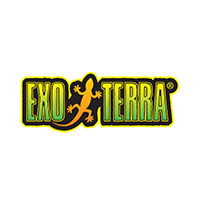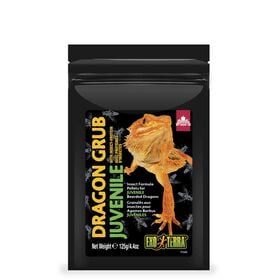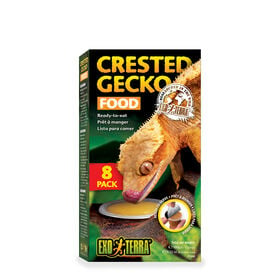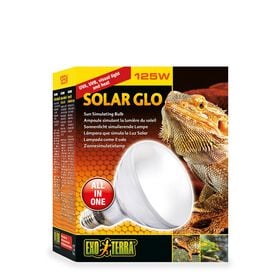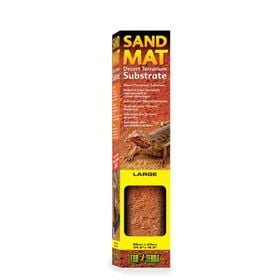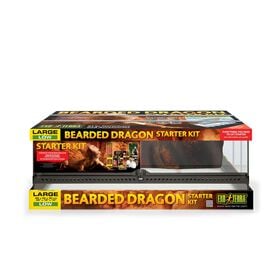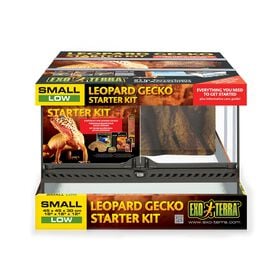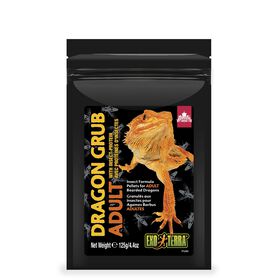A lizard can be a great pet for most households as many of them can be easy and simple to care for once the proper equipment is chosen. Quite often, we do not only learn about their care, but also about the regions and habitats they come from. In turn, it helps promote education and increases awareness of the conservation of our natural world!
When choosing your pet lizard, you should first consider the following factors: size of terrarium, temperament, lifespan, feeding and care of the animal.er.
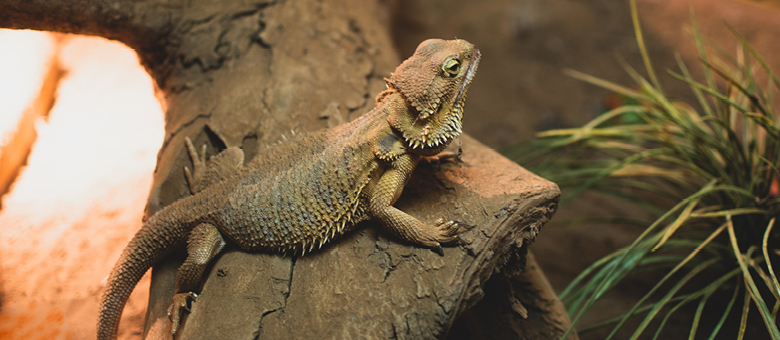
Enclosure size
Pet reptiles must spend most of their time in terrariums, but one thing you cannot deny your pet lizard is the minimum space it requires to thrive. That said, some lizards require larger habitats than others do. For that reason, it is important to consider how much space you are willing to give to your pet and choose a specie that will be happy in this space.
Temperament
Not all lizards make great pets if handling them is something you desire to do. The best ones are those that are usually calm and can be handled safely. Some are either too fast, too delicate or very defensive and may bite due to fear. We recommend that beginners avoid these lizards.
Lifespan
Most reptiles live much longer than the average pet. Lifespans of the most recommended lizards can range from 10 to 30 years. You will have to decide if you are willing to commit to caring for this animal for a long period as it will probably be around for many years to come.
Feeding & Care
There are over 4,675 species of lizards on the planet and they all have different food and habitat requirements. Some come from dry deserts, others from rainforests. Some lizards are insectivores, others are herbivores, and some are both!
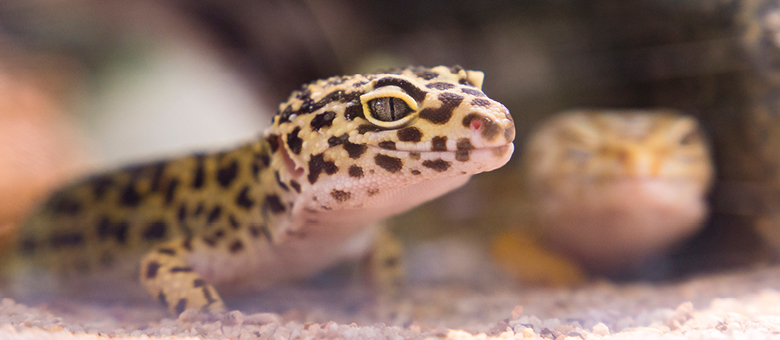
- Food:
Some lizards eat nothing but live insects. You will need to make regular visits to the pet store to purchase live crickets and mealworms to feed your insectivorous lizard. Not only will you need to purchase live insects, you will also need to care for these, such as providing them with food, water and a clean environment, so they are healthy and nutritious for your lizard. Luckily, nowadays, there are also, sometimes, ready-made diets that some lizards will gladly eat. That way, they receive all the nutrients they require. Most of these diets are developed for the omnivorous lizards, which are some of the best choices as pet lizards.
The herbivorous species may be a little harder to feed, as you need to provide them with a variety of fresh greens and veggies, along with supplements to ensure they are receiving all the nutrients they require.
- Care:
Some reptiles come from the desert while others come from forests or jungles. Desert-dwelling reptiles are a bit easier to care for, as they require less humidity, therefore less frequent misting of their enclosures. The forest and jungle dwellers require misting from once to multiple times a day. Fortunately, automatic misting systems exist. You can leave for extended periods without having to wonder about caregiving many times in a day.Lizards are reptiles, which means they are coldblooded; therefore, you will need to provide heat sources for their metabolism and immune systems to function properly. Depending on the species, some require more heat than others do. Some will need a basking lamp, while others may need an under-tank heater. Most diurnal lizards (i.e. that are active during the day) require UVB lighting, whereas any nocturnal lizards (i.e. that are active during the night) do not require this specialized type of lighting.
Below are the 5 most recommended pet lizards for beginners, along with their basic requirements. This is a summary of care. Please inform yourself more about the needs of the selected species before purchase in order to be well prepared.
Bearded Dragon
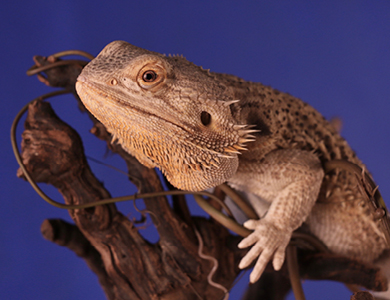
Minimum terrarium size: 90 x 45 x 45 cm
Temperament: A very calm lizard that can be handled daily without being stressed once used to hand manipulation.
Lifespan: 12 to 15 years
Diet: Omnivorous – Leafy greens, some fruits and insects as well as supplements of calcium and vitamins will be necessary. Ready-made diets are available.
Care: Desert dweller – Diurnal lizard that requires 10 to14 hours of UVB light, a basking spot and occasional warm water baths.
Crested Gecko
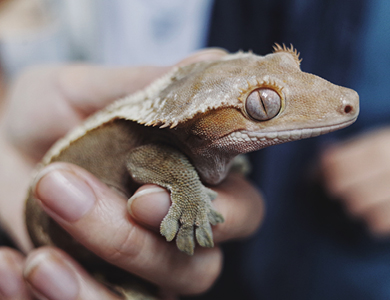
Minimum terrarium size: 45 x 45 x 60 cm
Temperament: A calm lizard that jumps occasionally. They can be handled daily without being stressed once used to hand manipulation.
Lifespan: 15 to 20 years or more
Diet: Insects and fruits. Supplements of calcium and vitamins will be necessary. Ready-made diets are available.
Care: Rainforest dweller – Nocturnal lizard only requiring gentle heat for 10 to 14 hours and heavy misting twice daily.
Leopard Gecko
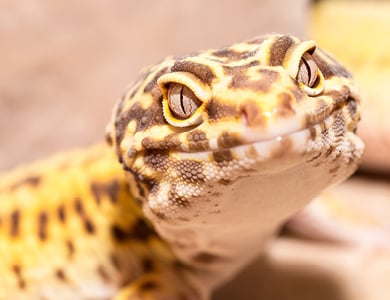
Minimum terrarium size: 45 x 45 x 30 cm
Temperament: A calm lizard which can be defensive if startled. They can be handled daily without being stressed once used to hand manipulation.
Lifespan: 15 to 20 years or more
Diet: Insects and supplements of calcium and vitamins will be necessary. They can be fed canned insects.
Care: Semi-arid dweller – Nocturnal lizard requiring heat from at least an under-tank heater. Sometimes, heat lamps are required to provide additional heat in colder months. They require daily light misting.
African Fat-tailed Gecko
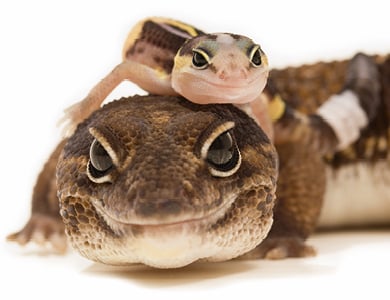
Minimum terrarium size: 45 x 45 x 30 cm
Temperament: A calm lizard that can be defensive if startled. They can be handled daily without being stressed once used to hand manipulation.
Lifespan: 15 to 20 years or more
Diet: Insects and supplements of calcium and vitamins will be necessary. They can be fed canned insects.
Care: Semi-arid dweller – Nocturnal lizard requiring heat from at least an under-tank heater. Sometimes, heat lamps are required to provide additional heat in colder months. They require daily light misting.
Spiny-tailed Lizard (Uromastyx)
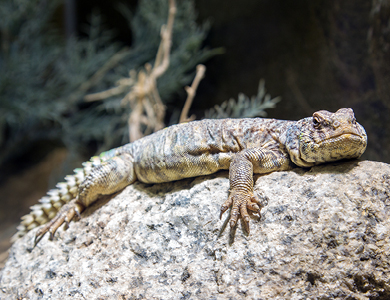
Minimum terrarium size: 90 x 45 x 45 cm
Temperament: Calm lizard that can tolerate daily handling once used to hand manipulation.
Lifespan: 12 to 14 years
Diet: Leafy greens, vegetables, beans and seeds. Insects can be offered as a treat only.
Care: Desert dweller – Diurnal lizard requires 10 to 14 hours of UVB light, a basking spot and occasional warm water baths.
Lastly, always make sure to ask if the lizard was born in captivity. This is to avoid the numerous health issues that can be encountered when a reptile is wild-caught.

